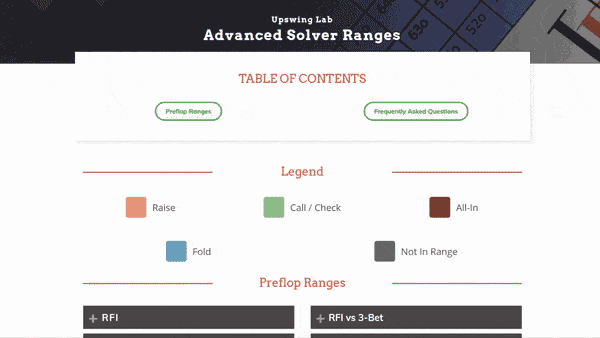3 Questions to Ask Yourself When Facing a Bet
Learning poker in 2020 can feel overwhelming.
The poker community is always buzzing about solvers and theoretically optimal play — and for good reason. In order to reach the highest levels of the game, you need to be familiar with these things.
But for most people, especially those who are newer to the game, mastering the fundamentals will be a better use of time than studying advanced concepts.
In other words, start with the lowest hanging fruit on the metaphorical tree of poker concepts.
With that in mind, today’s article will cover a simple and fundamental situation: facing a bet on the flop, turn, or river.
I will go over three questions that you should ask yourself when facing a bet, which will help you make the correct decision as often as possible.
The Scenario
Here’s the example hand we’ll use throughout the article:
Live $2/$5. 6-handed. $500 effective.
You are dealt 7♦ 6♦ on the Button.
You raise to $15. Small Blind 3-bets to $60. You call.
Flop ($125): T♦ 6♥ 3♠
Small Blind bets $40. You __?
Before moving on, vote for your preferred play in this spot.
Question #1: What is my range?
In order to play solid poker, you need to be aware of what your own range looks like.
A range is all of the possible hands that you can have given how the hand has played out so far. Your range narrows with every decision you make, starting preflop and continuing on each subsequent street.
For example, when we raise on the button and then call a 3-bet versus the small blind, our range will look something like this:
Green = Call vs 3-Bet | Blue = Not in Range
The hands in green represent our range heading into the flop. All of the blue hands would either be folded (like 72o) or 4-bet (like AA) before the flop, so they are removed from our range once we call the 3-bet.
By knowing that this is our range, we can determine where 7♦ 6♦ fits into it, which will help us make better decisions on the flop and as the hand progresses. (Remember, the flop was T♦ 6♥ 3♠.)
Note: Want to boost your preflop game to new heights? Access high-level preflop charts that will boost your win-rate when you join the Upswing Lab training course. Learn more now!

The Advanced Solver Ranges for cash games — one of five sets of preflop charts in the Upswing Lab.
Question #2: What should my opponent’s range be?
You also need to be aware of what your opponent’s range should look like given the actions he has taken so far.
To start, we’ll look at our opponent’s preflop range for 3-betting from the Small Blind after facing a Button open.
Red = 3-Bet vs Button Raise | Blue = Not in Range
Keeping this range in mind, and further narrowing it based on the opponent’s actions, is important as the hand progresses.
Question #3: What are my pot odds?
The final thing we need to know is (roughly) which hands to continue with versus a bet given the bet size that our opponent used.
We do this by considering our pot odds. Obviously you should continue versus small bets more often than versus big bets, but let’s prove this with math.
Here’s the example hand again for reference:
Live $2/$5. 6-handed. $500 effective.
You are dealt 7♦ 6♦ on the Button.
You raise to $15. Small Blind 3-bets to $60. You call.
Flop ($125): T♦ 6♥ 3♠
Small Blind bets $40. You __?
The opponent bet $40 into a pot of $125, meaning we have to call $40 to win a total pot of $205. That means our price to call is:
$40 / $205 = 0.195
0.195 * 100 = 19.5%
(Not sure what just happened? Learn how to calculate pot odds step-by-step here.)
With a pair and multiple backdoor draws, 7♦ 6♦ most certainly has more than 19.5% equity versus our opponent’s betting range. So, we can continue versus his bet.
Now, consider how this would change if our opponent fired a massive bet of $250 on the flop (two-times the size of the pot). That would mean our price to call is:
$250 / $625 = 0.4
0.4 * 100 = 40%
The massive bet makes it much tougher to continue. Unless our opponent is an absolute maniac, it is doubtful that 7♦ 6♦ has at least 40% equity versus the range of hands that can be bet for two-times the pot. So, we can comfortably fold versus this bet.
Note: Advanced players also consider the pot odds that their opponent is being offered on their bet. The resulting percentage is known as the minimum defense frequency (MDF). MDF is an advanced, “high-hanging fruit” concept that you can read about here. (If you consider yourself a relative beginner to poker, disregard MDF for now.)
Final Thoughts
Even though the three questions to ask yourself are very simple, they provide the same framework that players at all stakes use to guide their decisions at the table.
Want to learn how to play better with high-card hands after missing the flop? Read 3 Situations to Value Your Overcard Hands in Texas Hold’em.
That’s it for today. If you have any questions, feel free to drop them in the comments!
Note: Learn step-by-step how to become the best player at the table when you join the Upswing Lab training course. Elite pros have been adding new content every week for the past four years, and you get all of it when you join. Learn more now!